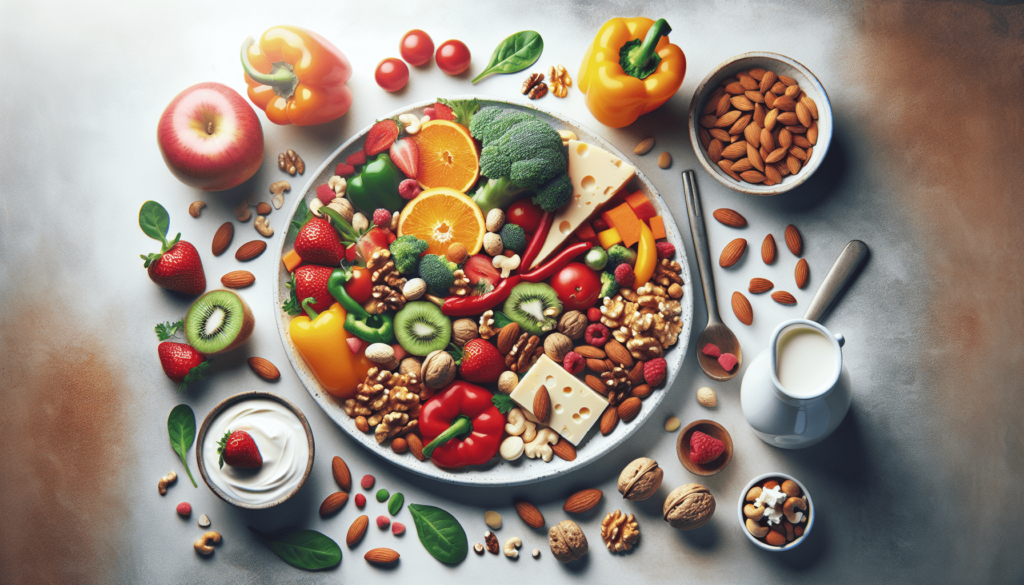Have you ever worried about handling food allergies when eating at friends’ homes? It can be a tricky situation, but with a little preparation, you can ensure both your safety and enjoyment. This guide will walk you through everything you need to know to manage food allergies while dining at a friend’s place.

Understanding Food Allergies
Knowing the basics of food allergies can help you better communicate your needs to others. Food allergies are an immune system reaction that occurs after eating a particular food. Even a small amount can trigger symptoms such as hives, respiratory issues, or anaphylaxis. With this understanding, you can take the necessary steps to protect yourself.
Common Food Allergens
To set the foundation, here is a table listing the most common food allergens:
| Allergen | Examples of Foods |
|---|---|
| Dairy | Milk, cheese, yogurt |
| Eggs | Baked goods, mayonnaise |
| Peanuts | Peanut butter, snacks |
| Tree nuts | Almonds, walnuts |
| Soy | Tofu, soy sauce |
| Wheat | Bread, pasta |
| Fish | Salmon, tuna |
| Shellfish | Shrimp, crab |
Being aware of these common allergens can make it easier for you to communicate with your friends about your specific needs.
Communication: The Key to Safety
The cornerstone of managing food allergies when eating at friends’ homes is effective communication. Clearly expressing your dietary restrictions ahead of time can minimize risk and put your mind at ease.
Talk to Your Friends
Having an open conversation with your friends about your food allergies before the meal is crucial. Here are some tips for that conversation:
- Be Honest and Direct: Clearly explain what you are allergic to and how severe your allergy is.
- Explain the Consequences: Let them know the potential reactions you could have if you consume an allergen.
- Provide Solutions: Suggest alternatives or offer to bring a dish that you can safely eat.
The goal is to inform, not overwhelm. Your friends likely want to accommodate you and will appreciate any help you can provide to make it easier for them.
Offer to Help Cook
One of the best ways to ensure your meal is safe is to offer to help in the kitchen. You can supervise the ingredients and cooking methods to prevent cross-contamination.
Practical Steps for a Safe Dining Experience
Planning and precaution go a long way towards mitigating any risks associated with food allergies. Here are practical steps to help ensure a safe and enjoyable experience:
Plan Ahead
It’s helpful to know the menu beforehand. If your friend is unsure of what to prepare, you could:
- Send Recipes: Offer to send them recipes that exclude your allergens.
- Share Favorite Dishes: Provide a list of your favorite meals that are allergen-free.
Educate the Host
Teaching your host about your allergies can help prevent inadvertent mistakes. Discuss safe cooking techniques and the importance of avoiding cross-contamination. You might also consider sharing a list of must-avoid foods and common hidden sources of allergens.
Bring Your Own Plate
If you’re unsure whether your friend’s kitchen will be free from cross-contamination, bring your own meal. This ensures you have something safe to eat and also relieves some pressure from your host.
Reading Labels and Understanding Ingredients
Being vigilant about what ingredients go into your food is crucial. Reading labels can be tricky, but knowing what to look for can make a huge difference.
Hidden Allergens
Sometimes allergens are hidden in ingredients that might not be obviously connected to them. Here’s a table to help you recognize some hidden sources:
| Allergen | Hidden Sources |
|---|---|
| Dairy | Ghee, whey protein, casein |
| Soy | Lecithin, monosodium glutamate (MSG) |
| Wheat | Modified food starch, hydrolyzed protein |
| Eggs | Albumin, lysozyme |
| Nuts | Marzipan, praline, natural extracts |
Know How to Read Labels
In the United States, food labels must list the top eight allergens if they are present. Always read ingredient lists carefully, and if you’re unsure about something, don’t hesitate to contact the manufacturer.

Ensuring Safety During the Meal
Even with all the planning in the world, it’s still important to remain vigilant during the meal itself. Here are some tips to help you stay safe:
Ask Questions
If you’re ever in doubt about a particular dish, politely ask your host about the ingredients and preparation methods. It’s better to be overly cautious than to risk an allergic reaction.
Spotting Cross-Contamination
Be on the lookout for signs of cross-contamination, such as shared utensils or cutting boards, which can transfer allergens from one dish to another. Politely asking if different utensils and surfaces were used can help mitigate this risk.
Sample Carefully
If you’re taking a small sample of a dish to test for allergens, always start with a small portion. Wait a few minutes to make sure you don’t have any reaction before consuming more.
Handling a Reaction
Despite all your best efforts, there is always a chance you might have a reaction. Knowing how to handle it can make a significant difference.
Carry Medication
Always carry your prescribed medication, such as antihistamines or an epinephrine auto-injector (EpiPen). Inform your friends about where you keep your medication in case you need assistance.
Emergency Plan
Having a clear emergency plan is vital. Here’s what to include in your plan:
- Recognize Symptoms: Understand the symptoms of your allergic reactions, such as hives, swelling, or difficulty breathing.
- Immediate Action: Take your medication at the first sign of a reaction.
- Seek Help: If symptoms worsen, don’t hesitate to seek medical help. Instruct your friends on how to take you to the nearest hospital or call emergency services.
Inform Others
Let your dining companions know about your allergies and how they can help in case of an emergency. A little preparation can ensure everyone remains calm and effective if a reaction occurs.
Enjoying the Meal
At the end of the day, the goal is to enjoy the meal and the company of your friends. With careful planning, clear communication, and vigilance, you can safely manage your food allergies and have a great time.
Be Gracious
Understand that your friends might not be fully knowledgeable about food allergies. Be patient and appreciate their efforts to accommodate you. A little bit of gratitude can go a long way in making the experience enjoyable for everyone.
Share Success Stories
Sharing successful dining experiences can not only help you but also educate and inspire your friends. Discuss what worked well and how similar steps can be applied in the future to ensure everyone’s safety and enjoyment.
Recap
Handling food allergies when eating at friends’ homes can be challenging, but it is manageable with the right approach. By understanding your allergies, communicating effectively, planning carefully, and being prepared for any situations that might arise, you can confidently enjoy social meals without compromising your health.
Remember, your safety is paramount, but it doesn’t have to come at the expense of enjoying good food and great company. Inform, prepare, and enjoy your time with friends.
